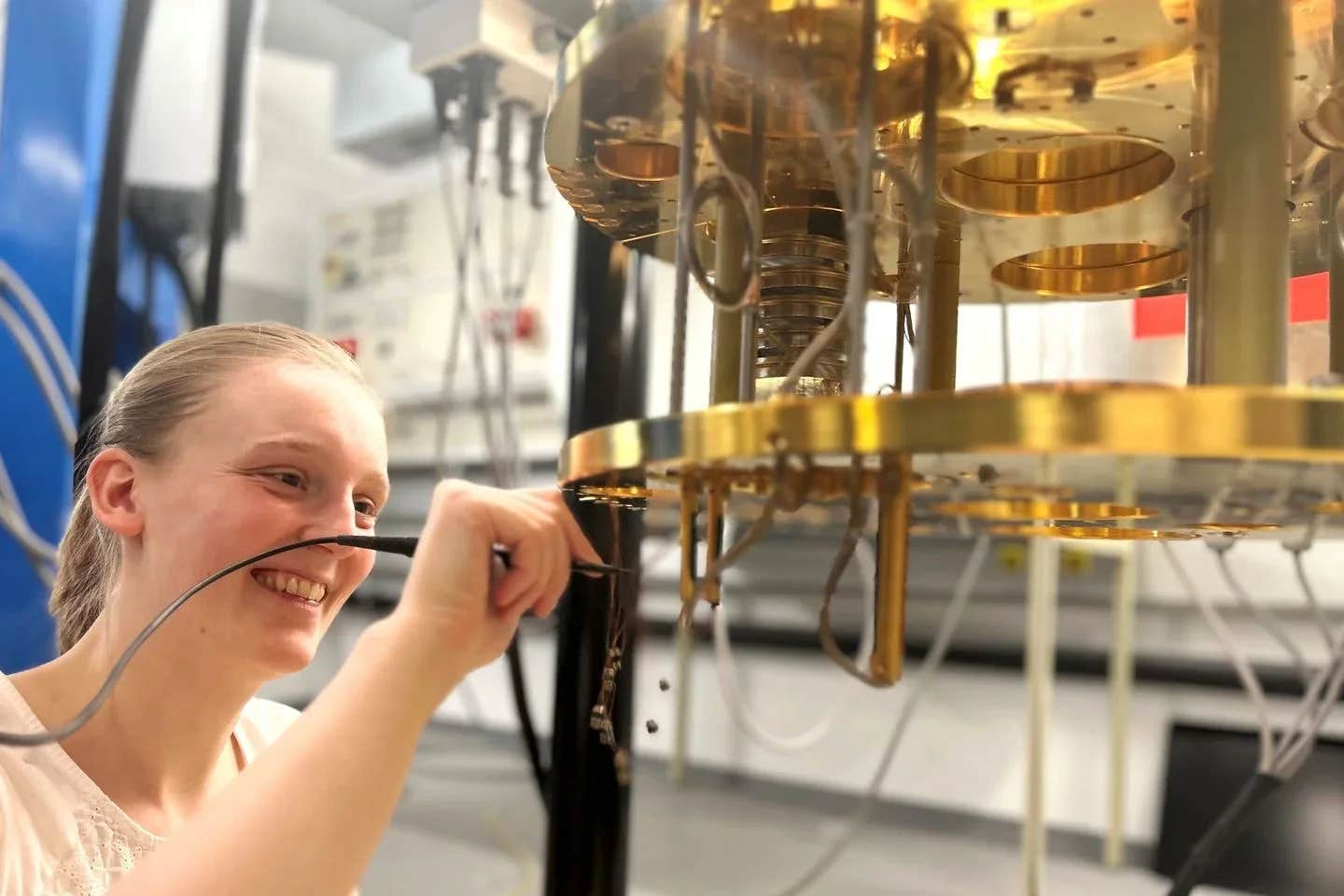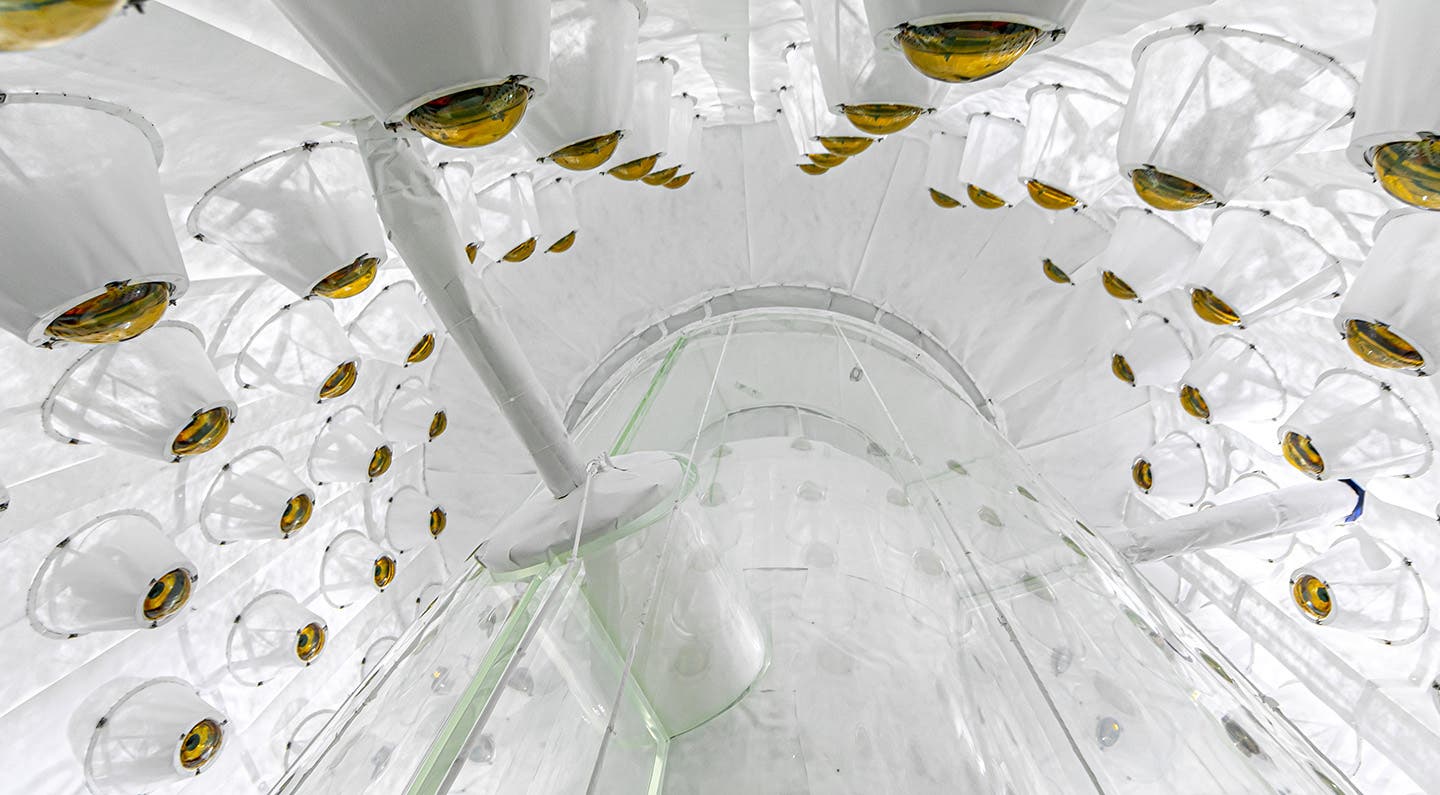Breakthrough in quantum magnetism powers future quantum computers and superconductors
A breakthrough in quantum physics reveals cerium zirconate as a likely three-dimensional quantum spin liquid, showing signs of emergent photons.

Scientists discover emergent photons in cerium zirconate, a strong 3D quantum spin liquid candidate with exciting quantum tech potential. (CREDIT: Angelika Bosak)
For decades, scientists have hunted for materials that defy conventional ideas of magnetism. Most magnetic materials, like the ones found in fridge magnets, behave in predictable ways. Their atomic spins—tiny quantum mechanical arrows—line up into neat, repeating patterns at low temperatures. But some materials refuse to cooperate. Even near absolute zero, where almost everything freezes into order, their spins remain restless.
Physicists have long suspected these materials might be hiding a strange and powerful state called a quantum spin liquid. Unlike a real liquid, which flows and changes shape, a quantum spin liquid stays solid. What makes it “liquid” is the way the atomic spins refuse to settle. Instead of aligning, they stay disordered and keep fluctuating, even in the coldest conditions. But they aren’t random. These spins are entangled—linked by invisible quantum threads that stretch across the material.
This highly entangled behavior could unlock the door to future quantum computers or exotic new superconductors. But the search for a true quantum spin liquid has proven incredibly frustrating. Promising signs have popped up in two-dimensional materials, but none of them matched theoretical predictions closely enough to be called the real thing. That may now be changing.
A Breakthrough in Three Dimensions
An international research team—including scientists from TU Wien in Austria, Rice University in Texas, the University of Toronto, and Rutgers University—has uncovered what may be the best evidence yet of a true quantum spin liquid. Their target is a crystal called cerium zirconate (Ce₂Zr₂O₇), which belongs to a class of materials known as pyrochlores. These have a unique three-dimensional structure made of corner-sharing tetrahedra, creating a complex lattice where magnetic frustration can thrive.
This time, the team didn’t just rely on theory. They used a powerful set of tools, including polarized neutron scattering and heat capacity measurements, to dig into the material’s quantum behavior. The results—published in Nature Physics—suggest that cerium zirconate is hosting not only high-energy magnetic spin excitations, called spinons, but also mysterious low-energy excitations that behave like emergent photons.
These emergent photons aren’t actual light particles. But within the quantum world of cerium zirconate, they act just like light. Their energies, directions, and behaviors mimic real photons—so closely that the same mathematical rules apply.
Related Stories
- Scientists develop the quantum version of the second law of thermodynamics
- New quantum battery breakthrough boosts energy storage by 1,000x
- Physicists use 5,564-qubit quantum computer to model the death of our universe
“That’s exactly why a real breakthrough in this area has remained elusive for decades,” says physicist Silke Bühler-Paschen of TU Wien. “We studied cerium zirconate, which forms a three-dimensional network of spins and shows no magnetic ordering even at temperatures as low as 20 millikelvin. For the first time, we were able to detect signals that strongly indicate a three-dimensional quantum spin liquid—particularly, the presence of so-called emergent photons.”
What Makes This Discovery So Special
Most previous quantum spin liquid candidates were two-dimensional. That made the math a little simpler, but it also limited the materials' behavior. In contrast, the structure of cerium zirconate is fully three-dimensional, thanks to its pyrochlore lattice. This structure creates a perfect environment for a special type of quantum spin ice—a quantum version of the classical spin ice found in other pyrochlore compounds.
In spin ice, the spins on each tetrahedron follow a “two-in, two-out” rule, like the positions of hydrogen atoms in frozen water. But in the quantum version, the spins don't just sit still—they flip, move, and entangle in ways that give rise to entirely new types of particles.
Using neutron scattering, the team spotted magnetic excitations near zero energy. These are the hallmarks of those emergent photon modes. Higher-energy signals also appeared, consistent with spinons, which are the quantum particles that carry spin without charge. Unlike in conventional magnets, these spinons move freely through the material, another sign of a quantum spin liquid.
To confirm the nature of these excitations, the team also measured how the material’s heat capacity changed with temperature. The results showed a cubic-in-temperature behavior, exactly what you'd expect from materials with gapless bosonic modes—the kind produced by these emergent photons. Together, these experiments build a strong case.“We plan to conduct further experiments,” Bühler-Paschen adds, “but from our perspective, cerium zirconate is currently the most convincing candidate for a quantum spin liquid.”
A Platform for Future Quantum Technology
Why does this discovery matter? Quantum spin liquids are more than just scientific curiosities. Their entangled spin states and exotic excitations could become building blocks for quantum computing. In these materials, information might be stored not in a single particle, but across the entire entangled network of spins—making it much harder to corrupt or lose.
This could lead to topological quantum computers, which promise greater stability and power than current designs. Even if that goal is still far away, understanding quantum spin liquids is already changing the way scientists think about magnetism and quantum matter.
The research team isn’t stopping here. They are now planning high-resolution studies of cerium zirconate and similar compounds. Their aim is to map out the exact conditions that give rise to emergent photons and spinons and explore how these quantum properties can be controlled or enhanced.
In their work, the scientists also compared the observed behavior with theoretical models. Their results show that cerium zirconate is a strong candidate for a dipolar–octupolar quantum spin ice, with dominant dipolar Ising interactions. This term refers to the special way spins interact within the material, flipping between two states like quantum bits, or qubits. These kinds of spin systems could play a major role in the future of quantum simulation.
For now, cerium zirconate stands as the best-known example of what a three-dimensional quantum spin liquid might look like. It brings theory and experiment into rare agreement and sets the stage for a new era of materials science.
Toward a New Quantum Frontier
In the world of solid-state physics, progress can be slow and uncertain. Theorists often dream up exotic new states of matter, but proving they exist is another story. For more than 40 years, quantum spin liquids were mostly speculation. Promising hints emerged from 2D materials, but none matched theory closely enough.
The discovery in cerium zirconate changes that. With clear signs of quantum entanglement, spin disorder, emergent gauge fields, and collective excitations, the evidence is now too strong to ignore. It’s not just a better candidate—it may be the first one that checks every box.
From a scientific standpoint, this finding opens the door to a richer understanding of matter and magnetism. From a technological view, it lays groundwork for new advances in quantum engineering. And from a philosophical perspective, it offers a reminder that even in solid matter, motion and mystery are never far apart.
Note: The article above provided above by The Brighter Side of News.
Like these kind of feel good stories? Get The Brighter Side of News' newsletter.



